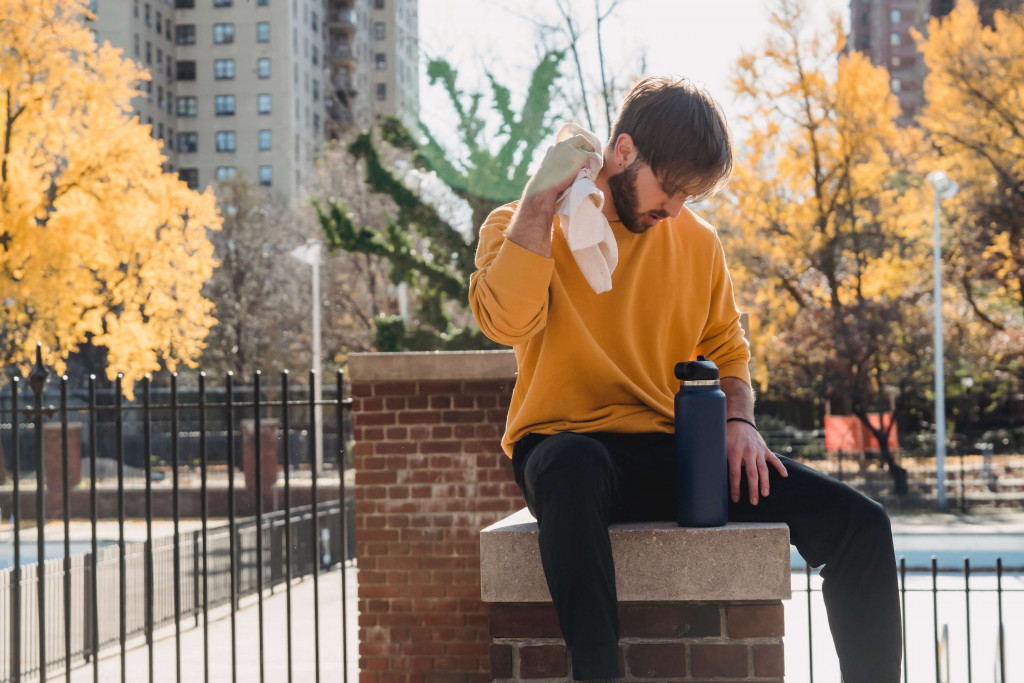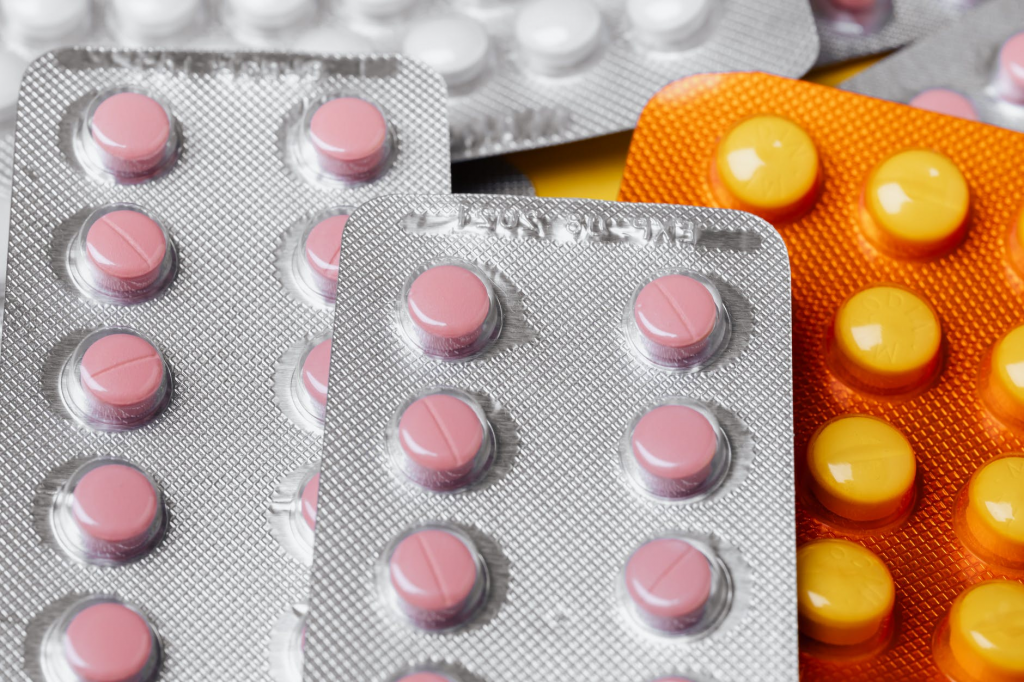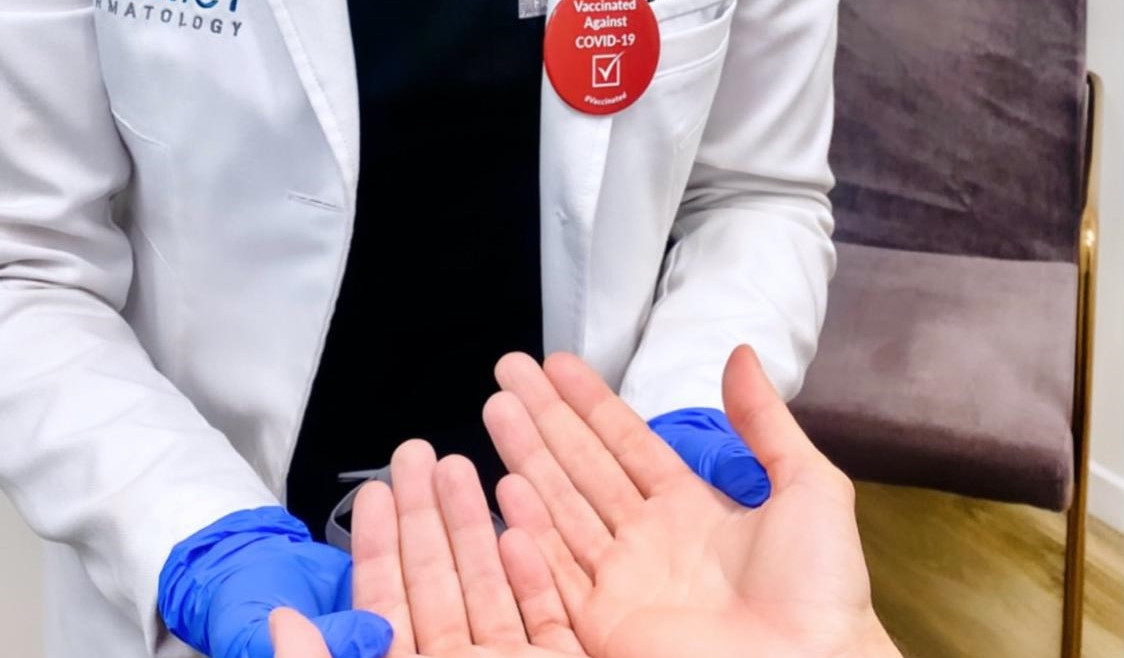First of all, we all need to know that sweating is normal. However, for some people, this sweating is excessive. Do you feel that you are sweating more than other people? Is your antiperspirant not helping? Do you ever feel the need to wipe your hands before any handshake with people? Do you find that you have to change your undergarments frequently during the day? If you can relate, chances are you’re suffering from hyperhidrosis disorder. Yet, you’re not alone; approximately 3% of the world’s population have this medical condition. Let’s learn more about hyperhidrosis and things you can do to help decrease sweating.
What Is Hyperhidrosis?
Hyperhidrosis disorder is a condition that results in excessive sweating or perspiration. Those who suffer from hyperhidrosis experience excessive sweating in situations that they normally shouldn’t; such as cooler weather. Primary hyperhidrosis which is the most common type of hyperhidrosis involves excessive sweating in localized areas, most commonly palms, soles or armpit. This can occur without any triggers when one least expects it. Sometimes, hyperhidrosis can be caused by underlying medical conditions such as hyperthyroidism or menopause.
Types of Hyperhidrosis
There are two main types of hyperhidrosis:
- Primary Hyperhidrosis
- Secondary Hyperhidrosis
What Causes Hyperhidrosis?
Sweating is the way the body cools itself. However, excessive sweating differs from the ‘normal’ sweating the human body experiences. While normal sweating occurs due to the sweat glands getting triggered as the temperatures rise, in hyperhidrosis, there is an activation of the sweat glands even though no physical activity or rise in temperature occurs.
Secondary causes of hyperhidrosis involve underlying conditions such as:
- Diabetes
- Hypoglycemia a.k.a Low blood sugar
- Nervous system disorders
- Infections
- Thyroid problems
- Menopause hot flashes
Symptoms of Excessive Sweating

Sweating is totally normal when it happens in situations where the weather temperatures are high and when one is anxious or under stress. But this doesn’t apply to hyperhidrosis. It affects many parts of the body, from the face, hands, underarms, feet, lower back, and genitals. It can only occur during waking hours at least one episode a week. The symptoms range from:
- Clammy palms
- Sweaty palms, soles, or armpits
- Sweating to that point that you have to change clothing because they’re soaked
- Visible dripping sweat beads on your cheeks or forehead
- Excessive sweating impairs activities of daily life
- Sweating stops during nighttime
These patients spend a significant time showering, changing their wet clothes, placing pads or napkins under the arms, or carefully selecting clothing to wear so as to hide stains. Not to mention the hesitation and embarrassment these patients feel because of the fear of other people’s perceptions of their excessive sweating.
How Is Hyperhidrosis Diagnosed?
A dermatologist diagnoses this condition through a thorough history taking and physical examination. Part of this physical examination is the close inspection of the areas you deem to be sweating profoundly. Dermatologists can also perform tests in the office, which can help in making the diagnosis such as using calorimetric techniques and starch-iodine test, which can demonstrate the sweating patterns and reveal the location of the most active sweat glands in a given area.
How Is Hyperhidrosis Treated?
The dermatologist decides on the treatment for hyperhidrosis you need depending on what type of hyperhidrosis you’re suffering from and how severe it is.
Aluminum-based antiperspirants
The main function of aluminum-based antiperspirants is to “seal up” sweat glands so that sweat production stops. Antiperspirants come in different varieties. 12% aluminum chloride can be found OTC, however, often higher strength prescription ones are needed. Pro-Tip- Apply to dry surfaces at night when sweating is diminished. You should keep in mind that the stronger the antiperspirant, the more likely it is to cause irritation.
Oral medications

Your dermatologist might prescribe you anticholinergic drugs. These drugs may help with sweating and may help aluminum-based perspirants be more efficient in their function. However, there is one thing you should be aware of; these drugs can have side effects such as blurry visions, dry mouth, or urinary retention, which you should discuss with your doctor. Other examples of oral medications include clonidine or propranolol.
Qbrexza
This is a new product in the market. These are prescription-only anticholinergic wipes (glycopyrronium tosylate) that can decrease sweating. They are found to be effective and well-tolerated. Unfortunately, these are often expensive and not covered by health insurance. The benefit of these wipes is that they are less likely to have systemic side effects compared to the oral medications mentioned above.
Iontophoresis
This is a medical device that can deliver mild electrical currents while your hands are submerged in water. This is also thought to block sweat ducts, although the mechanism of action is less well understood. Treatment can be performed several times a week, and it can be helpful.
Botox Injections
Yes, Botox! It is not only for wrinkles. The Food and Drug Administration has approved botulinum toxin type A (BTA) in the US for the treatment of axillary hyperhidrosis. It seems like Botox is becoming the all magical ingredient that fixes everything. Botox can be injected into affected areas such as the armpit. The results can last anywhere from 4-14 months, and most importantly, most health insurances cover this type of treatment.
miraDry
miraDry is a non-invasive handheld device that delivers electromagnetic energy through the skin. This heats and destroys sweat glands resulting in decreased sweating as well as eliminating odor-producing glands.
Surgery
Surgery is the last option chosen by those who didn’t respond to other available hyperhidrosis therapies. Some hyperhidrosis cases are treated by removing sweat glands from the underarm. The nerves responsible for the symptoms are disconnected, and patients might experience significant improvement from this. Resection of axillary skin can result in significant scarring.
Excessive sweating can significantly affect daily activities and social interactions. Knowing what causes it and how you can treat this condition is a must. For more information on this condition, check out sweathelp.org. They are a wonderful source of resources. You can also find a local dermatologist that has a special interest in hyperhidrosis.


